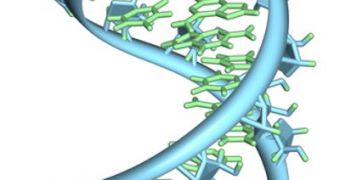Scientists were recently able to determine precisely how bacteria repaired their own RNA. This is the second such mechanism identified in any living thing, with the first having been found some time ago, in the T4 phage, a virus that attacks bacteria. The find was made by a team of scientists from the University of Illinois (UI), led by Biochemistry Professor Raven H. Huang. Details of the investigation appear in two papers, to be published in the top journal Science, and also in the Proceedings of the National Academy of Sciences (PNAS), e! Science News reports.
The thing about the new repair system is that it makes the damaged RNA “better than new.” That is to say, before it is “sealed” (so as to avoid future damage), a methyl group is added to the two-prime hydroxyl groups at the cleavage site. This prevents the molecule from being cleaved again in the future, the scientists report. The main class of biomolecules that use this RNA vulnerability consists of ribotoxins, which destroy cells by randomly cleaving RNA molecules. This impairs cellular functions, eventually leading to its destruction.
“Hen1 is one of three essential enzymes in generating small noncoding RNAs for RNA interference in eukaryotes. We found out that Hen1 homologs exist in bacteria, but bacteria have no RNA interference. Therefore, we were very curious to find out what bacterial Hen1 is used for,” Huang reveals. “Our studies demonstrated that bacterial Hen1 carries out the same chemical reaction as its counterpart in eukaryotes, which was not surprising. What surprised us was that, instead of involvement in RNA interference, the bacterial Hen1 is part of a[n] RNA repair and modification system. And Hen1 is responsible for producing the repaired RNA that is 'better than new,'” he adds.
The Hen1 homolog in bacteria is precisely the enzyme that causes the methylation process (the addition of the methyl group) to take place. This draws another parallel between bacteria and eukaryotes, although the bacterial defense mechanism is, obviously, a bit less complex than the one in higher organisms. However, for the purpose it serves, the repair system is more than apt for the task, considering that it oftentimes functions in a single cell, the scientists conclude.

 14 DAY TRIAL //
14 DAY TRIAL //